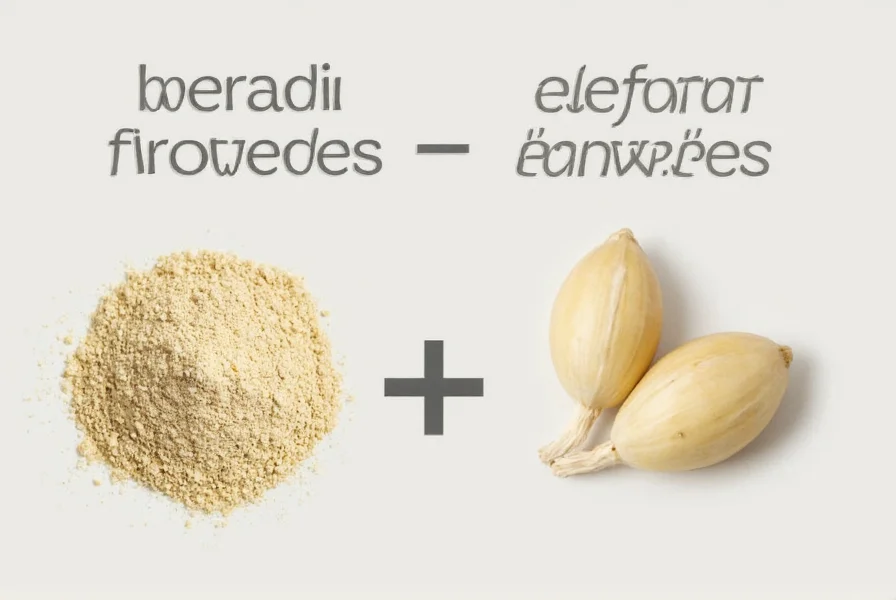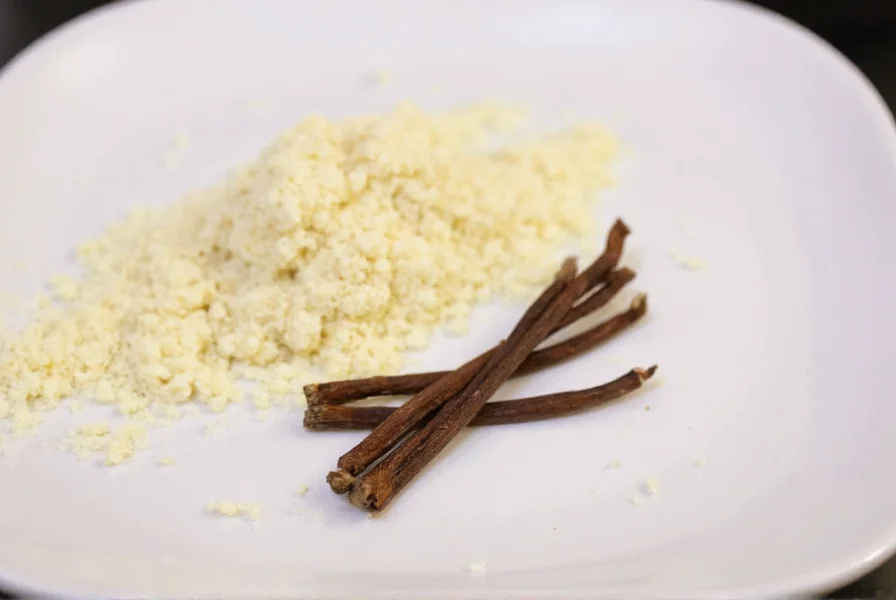The direct answer to your question: 1/4 teaspoon of garlic powder equals 2 fresh garlic cloves. This standard conversion ratio (1/8 teaspoon garlic powder per 1 clove) works for most recipes, though flavor intensity may vary based on garlic variety and powder freshness.
Converting fresh garlic to garlic powder is a common kitchen challenge that can make or break your dish. Understanding the precise garlic powder to fresh garlic conversion ensures your recipes maintain the intended flavor profile without overpowering or under-seasoning.
Understanding the Garlic Powder Conversion Ratio
The standard culinary conversion accepted by professional chefs and food scientists is 1/8 teaspoon of garlic powder equals one medium fresh garlic clove. This ratio accounts for the dehydration process that concentrates garlic's flavor compounds while removing moisture.
When working with this garlic measurement conversion chart, remember that fresh garlic contains approximately 60-65% water content that gets removed during the drying process to create powder. This concentration means you need significantly less powder to achieve similar flavor intensity.
| Fresh Garlic | Garlic Powder Equivalent | Garlic Salt Equivalent* |
|---|---|---|
| 1 clove | 1/8 teaspoon | 1/4 teaspoon |
| 2 cloves | 1/4 teaspoon | 1/2 teaspoon |
| 3 cloves | 3/8 teaspoon | 3/4 teaspoon |
| 4 cloves | 1/2 teaspoon | 1 teaspoon |
| 6 cloves | 3/4 teaspoon | 1 1/2 teaspoons |
| 8 cloves | 1 teaspoon | 2 teaspoons |
*Garlic salt contains approximately 3/4 salt and 1/4 garlic powder, requiring adjustment for sodium content
Factors That Affect Garlic Powder Substitution
While the standard garlic powder equivalent to fresh cloves ratio works for most applications, several factors can influence your substitution:
- Garlic variety - Some garlic strains naturally have stronger flavors than others
- Powder freshness - Garlic powder loses potency over time (typically 6-12 months after opening)
- Recipe cooking time - Long-simmered dishes may require slightly more powder
- Dish acidity - Acidic ingredients can mellow garlic flavor, potentially requiring adjustment
- Cuisine type - Mediterranean dishes often use more garlic than Asian cuisines

When Garlic Powder Works Best as a Substitute
Understanding the proper how to substitute garlic powder for fresh garlic technique matters most in these cooking scenarios:
Dry rubs and spice blends benefit significantly from garlic powder since it distributes evenly without moisture. Marinades for grilled meats work well with powder as it dissolves completely. Baked goods like breads and crackers incorporate powder more consistently than fresh garlic. Salad dressings and vinaigrettes achieve smoother emulsions with powder rather than fresh garlic.
For the garlic powder substitution ratio in these applications, consider blooming the powder in a small amount of warm oil or liquid for 5-10 minutes before adding to your recipe. This rehydrates the powder and releases more flavor compounds, creating a closer approximation to fresh garlic's profile.
When Fresh Garlic Is Preferable
Despite the convenience of powder, certain dishes demand fresh garlic for authentic flavor. Raw applications like aioli, pesto, or fresh salsas lose the complex enzymatic reactions that create garlic's characteristic bite when using powder. Quick-cooking dishes such as sautés or stir-fries showcase fresh garlic's bright, pungent notes that powder cannot replicate.
If you must use powder in these applications, add it early in the cooking process to allow time for flavor development. For raw applications, consider using garlic-infused oil as a middle ground between powder and fresh cloves.
Professional Tips for Perfect Garlic Substitution
Seasoned chefs recommend these techniques when working with the how much dried garlic equals fresh garlic conversion:
- Always measure garlic powder with proper measuring spoons (not eyeballing)
- Store garlic powder in an airtight container away from light and heat
- Test your powder's potency by rubbing a small amount between damp fingers - strong aroma indicates freshness
- For delicate dishes, start with 3/4 of the recommended amount and adjust to taste
- Combine garlic powder with a tiny pinch of ascorbic acid (vitamin C) to enhance flavor release

Common Mistakes to Avoid
Many home cooks make these errors when using the garlic powder to fresh garlic conversion:
Overestimating the conversion ratio leads to overpowering, bitter flavors. Using old or stale garlic powder results in weak flavor that prompts adding too much. Adding garlic powder directly to dry ingredients without proper distribution creates flavor pockets. Ignoring the sodium content when using garlic salt instead of pure powder throws off recipe balance.
Remember that garlic powder provides consistent flavor without the variable intensity of fresh cloves, which can differ significantly in potency based on growing conditions and storage.
Final Conversion Recommendation
For most standard recipes calling for 2 fresh garlic cloves, 1/4 teaspoon of fresh garlic powder delivers optimal results. When precision matters in professional cooking or sensitive palates are involved, start with 3/16 teaspoon and adjust upward after tasting. This conservative approach prevents the common mistake of over-garlicking, which cannot be corrected once added to your dish.











 浙公网安备
33010002000092号
浙公网安备
33010002000092号 浙B2-20120091-4
浙B2-20120091-4